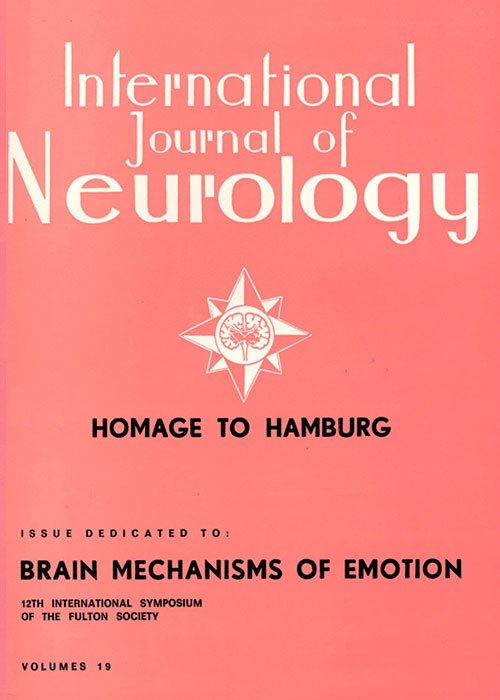Full Issue
DOI:
https://doi.org/10.62486/ijn198539Abstract
The combined issue (Numbers 1–2–3–4) of Volume 19 of the International Journal of Neurology (1985) was dedicated to brain mechanisms of emotion, a pioneering collection that examined the neural, physiological, and behavioral foundations of affective processes, with a particular focus on the limbic system and epilepsy. Edited by Víctor Soriano, the volume brought together leading neuroscientists and clinicians whose work bridged experimental neurobiology and emotional psychopathology.
The issue opened with Jerome Engel, Richard Bandler, and Sally Caldecott-Hazard’s analysis of the modification of emotional expression in clinical and experimental epilepsy, documenting alterations in affective behavior induced by epileptic discharges and their neuroanatomical correlates. Benson, Méndez, Engel, Signer, and Zimmerman expanded on this theme in “Affective Symptomatology in Epilepsy,” describing the phenomenology of emotional disturbances such as anxiety, fear, and ecstasy associated with temporal lobe seizures.
Richard Bandler and colleagues contributed a seminal paper on midbrain neural mechanisms mediating emotional behavior, detailing descending pathways involved in defense, aggression, and autonomic arousal. Similarly, A. Siegel and collaborators examined aggressive responses in cats following temporal lobe epileptiform activity, linking limbic excitability to altered emotional reactivity.
Makram Girgis discussed emotional disturbances arising from limbic system dysfunction, emphasizing the interplay between structural lesions and behavioral outcomes. Schwartz-Giblin and Pfaff investigated hypothalamic output mechanisms regulating reticulospinal and vestibulospinal systems, clarifying motor and autonomic substrates of emotion.
Broadening the scope beyond epilepsy, Alexander G. Schauss explored nutritional influences on brain function, behavior, and learning, proposing integrative frameworks for neurochemical modulation of affect. Robert and Cannie Adamec analyzed limbic traces and interictal behavior, distinguishing between transient and persistent emotional changes in epileptic patients.
Arthur W. Epstein offered an original perspective on ictal laughter in temporo-limbic epilepsy, interpreting this phenomenon as a vestige of emotional phylogenesis and a window into the brain’s hierarchical organization of affect. Yasumasa Arai, Akira Matsumoto, and Masako Nishizuka concluded the issue with an anatomical study of sexually dimorphic patterns in the hypothalamic and limbic brain, revealing structural bases for gender differences in emotional regulation.
Overall, this volume provided one of the earliest integrative treatments of emotion as a neurobiological function, weaving together data from electrophysiology, neuroendocrinology, and behavioral neurology. It anticipated later developments in affective neuroscience and deepened the understanding of the limbic system’s role as the bridge between physiology and emotion.
Downloads
Published
Issue
Section
License
Copyright (c) 1985 International Journal of Neurology (Author)

This work is licensed under a Creative Commons Attribution 4.0 International License.
The article is distributed under the Creative Commons Attribution 4.0 License. Unless otherwise stated, associated published material is distributed under the same licence.







